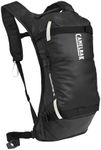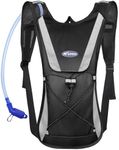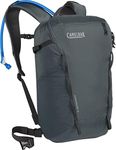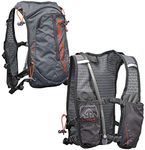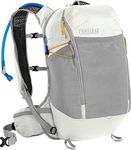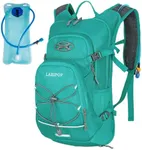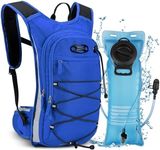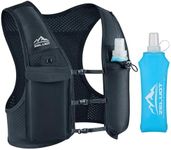Buying Guide for the Best Hiking Hydration Pack
Choosing the right hiking hydration pack is essential for ensuring you stay hydrated and comfortable on your outdoor adventures. A hydration pack is a backpack designed to carry water and make drinking convenient while on the move. When selecting a hydration pack, consider factors such as capacity, fit, and additional features to find the best option for your needs.CapacityCapacity refers to the amount of water the hydration pack can hold, usually measured in liters. This is important because it determines how much water you can carry with you, which is crucial for staying hydrated during your hike. Hydration packs typically range from 1.5 liters to 3 liters. For short hikes or runs, a 1.5-liter pack may be sufficient. For longer hikes or more strenuous activities, a 2 to 3-liter pack is recommended. Consider the duration and intensity of your hikes to choose the right capacity for you.
Fit and ComfortFit and comfort are crucial for ensuring that the hydration pack does not cause discomfort or hinder your movement. This includes the design of the shoulder straps, back panel, and overall adjustability. Look for packs with adjustable straps and a snug fit to prevent bouncing. Some packs also offer ventilated back panels to keep you cool. Try on different packs to see which one feels the most comfortable and secure on your body, especially if you plan on wearing it for extended periods.
Reservoir DesignThe reservoir, or bladder, is the part of the hydration pack that holds the water. Its design can affect ease of use and cleaning. Look for reservoirs with wide openings for easy filling and cleaning. Some reservoirs have quick-disconnect hoses, which make refilling and cleaning more convenient. Consider how easy it is to drink from the reservoir, as some have bite valves or on/off switches to prevent leaks. Choose a design that suits your preferences for ease of use and maintenance.
Storage and OrganizationIn addition to carrying water, many hydration packs offer extra storage for gear, snacks, and other essentials. This is important for keeping your items organized and easily accessible. Packs can range from minimal storage to multiple compartments and pockets. If you only need to carry water and a few small items, a pack with minimal storage will suffice. For longer hikes or if you need to carry more gear, look for packs with ample storage options. Consider what you typically bring on your hikes to determine the right amount of storage for you.
Durability and MaterialDurability and material refer to the construction quality of the hydration pack, which affects its longevity and performance. This is important because a durable pack will withstand the rigors of hiking and last longer. Look for packs made from high-quality, tear-resistant materials. Consider features like reinforced stitching and sturdy zippers. If you hike in various weather conditions, you might also want a pack with water-resistant or waterproof materials. Choose a pack that can handle the type of terrain and conditions you typically encounter.
WeightWeight refers to how heavy the hydration pack is when empty. This is important because a lighter pack will be easier to carry, especially on long hikes. Hydration packs can vary in weight depending on their size and features. For shorter hikes or runs, a lightweight pack is ideal. For longer hikes where you need more gear, a slightly heavier pack with more features might be necessary. Consider the balance between weight and functionality to find a pack that meets your needs without being too cumbersome.

